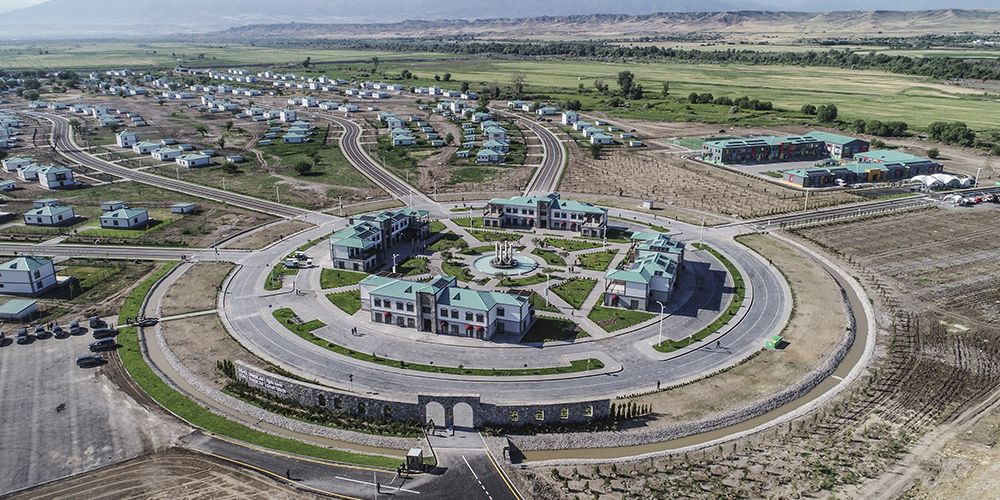Search

Publications
The key region for Azerbaijan’s post-petroleum transition

In 2021-2022, Azerbaijan authorities allocated circa USD 3 bn for development of Karabakh and East Zangezur economic regions. Let us summarize the undertaken measures and their potential impact on the economy of Azerbaijan.
The Azerbaijanian territories liberated after the Second Karabakh War of 2020 (circa 10 thou sq. km and over 100 hectares of agricultural land) in essence are performing as a resource storehouse for the national economy; their drawing into economic circulation in the long term will be an incentive for social and economic development of the country. In early 2021, it was obvious already, that the territories liberated after the Armenian occupation will turn into the zone of wanton growth for the national construction center. The new industrial sites of the region will be called to «spin» the non-resource sectors of the economy of Azerbaijan.
According to the World Bank, the specific weight of the petroleum sector in the GDP structure of Azerbaijan by 2050 will decrease down to 10% vs. 29.5% in 2020. In reality, Azerbaijan is gradually drawn into the post-petroleum age, and the new economic regions are the main drivers of such transition at the current stage (during the 2020s). In fact, these processes of increasing the share of non-resource sector of the economy are already in place.
Extension of the entire list of construction projects: from housing to agri-business sector, plus the development of road infrastructure will provide for circa 2% growth of total GDP by 2023. When the projects in West Zangezur economic region heat up and attract not just budget funding, but foreign investment as well, they may contribute up to 2.5% into the economic growth of Azerbaijan.
According to Gazprombank, which publishes the results of Azerbaijanian economy monitoring on an on-going basis, the projects in the liberated territories will provide for the growth of the construction sector share in the national GDP up to 10% by 2023 vs. 8% in 2019 making this sector the third largest in the GDP profile after such industries as extraction of natural resources and transport. This is a very serious contribution.
On the other hand, we need to understand that the already allocated rehabilitation program funding (circa USD 3 bn) make only one-fifth of the expenditure of the 4th government program of social and economic development of the regions for 2019-2023 (in total, it constitutes USD 15 bn).
Many estimates agree that after the period of 2023-2026 (the first stage of the government program for rehabilitation of the liberated territories), after the basic infrastructure in these regions is completed, their wanton growth will begin driven mainly by the following factors:
- the growing demand for Azerbaijanian electricity abroad including the EU countries;
- the growing efficiency of agri-businesses including production grain crops;
- the growing of tourism sector including health, sports and business tourism.
The building boom
The first and the most demonstrative indicator of the forthcoming wanton growth is the situation in the construction sector. The January-September 2022 results show that its share in the GDP profile of Azerbaijan grew by 13% vs. the similar metric of the preceding year. Another accurate marker is the construction materials manufacturing sector, which has demonstrated tangible growth due to the projects implemented in Karabakh. According to the national statistics agency, in January-September of the current year the Azerbaijanian enterprises manufactured construction materials for AZN (Azerbaijan manat) 808.9 mln, 17% above the similar metric of the preceding year. It was natural that the construction sector accepted the main portion of investor. In 2021-2022, over AZN 4.4 bn were allocated for infrastructure and other types of work, and this amount grew even more after the revision of the budget revenue this June – AZN 1.447 bn were reserved additionally.
The allocated funds are actively spent. Thus, total investment into fixed capital (buildings, infrastructure, industrial facilities) concentrated mainly in Karabakh and East Zangezur economic districts made AZN 1.76 bn in H1 2022.
The geography of the potential developers having applied bids for regional projects is also very interesting: about 32 companies from 17 countries. This fact contradicts with the initial expectations about rehabilitation becoming the burden exclusively for companies from Azerbaijan and Turkey.
Russian companies are also demonstrating strong interest to construction in the liberated territories and their comprehensive development.
A series of innovations developed for the Northern territories may be applied in East Zangezur. In particular, Segezha Group from Russia presented the high-rise blocks from CLT-panels (innovative construction material made of Such materials are also used in Scandinavian countries and Northern Europe.
Though this product is relatively unusual for Azerbaijan, where houses are traditionally built of stone and concrete, it may be a good option for quick rehabilitation of housing infrastructure from the standpoint of speed. In particular, a four-story building of 3 thou sq. m may be assembled of such panels within 2 months, which is not possible using any other material.
There is one more important reason for the interest of Russian developers towards Azerbaijan: they are in search for new promising markets outside the RF economy covered by a «dome» of Western sanctions.
In early August 2022, Oxta Qrupp Baku was entered into the Tax Register of Azerbaijan. It is a subsidiary of Russian Megalit – Ohta Group (11th position in the RF). The authorized capital of the new Azerbaijanian company is AZN 600 K. This is the first example of a Russian developer of such high level entering the construction market of Azerbaijan, monopolized by national and Turkish companies (in this case we are taking off the table the successful construction business of Agalarov’s family considering their connections with Azerbaijanian elites). It is interesting, that in August Matviyenko Jr. joined the shareholders of Ohta Group, which received a strong impetus during the period when Valentina Matviyenko was the Governor of St.-Petersburg. We will wait and see how their business will go, what new facilities they will erect in Baku or in the newly liberated regions.
Obviously, companies from different countries will be acting in Azerbaijan through local contractors (except for certain professions) and will be using local materials (except for some finishing ones). There are all the necessary pre-requisites for that: the construction materials manufacturing sector grew by 17%, and the share of construction sector in the Azerbaijan GDP profile grew by 13% YoY.
National agrarian garner
The economic districts will be specializing mainly in agri-business. To illustrate that, we can mention that the total investment into the Agropark Dost ecosystems in Zangilan district will make USD 100 mln. A huge business will be created with 6 thou hectares of the planted acreage and up to 10 heads of livestock population. In addition, the plan is to build a meat-processing and packaging facility, the 100 Kt warehouse and to establish a separate chain for supplying products to the external markets.
It is quite probable, that a number of such agri-businesses will be set-up. About 150 thou jobs will be created in different sectors of industry, agriculture and tourism in Karabakh economic region only. Potentially, by 2024, the agricultural land of the newly liberated territories may double the planting of grain crops in Azerbaijan (up to 300 Kt).
«Green» energy
Karabakh region is marked as the key area for alternative energy development: according to preliminary estimates, over 10 thou MW of renewable energy may be generated here including circa 7,000 MW of solar energy and 2,000 MW of wind energy, and small-scale hydropower plants will provide for the remaining generating capacities. For this purpose, specialists from the Energy Ministry of Azerbaijan supported by Japanese TEPSCO have been drafting the Green Energy Zones Concept starting from last year. The initial version of the document was already filed with the Azerbaijan Government, the Master Plan of such zone is expected to be completed this year.
According to Parviz Shahbazov, the Energy Minister of Azerbaijan, restoring small-scale hydropower plants and attracting foreign investment for building a wind park in Lachin-Kalbajar region are the key priorities. The possibility of rehabilitating over 50 small-scale hydropower plants with total capacity over 320 MW is now being explored. Currently, the construction of 5 small-scale hydropower plants with total capacity of 26.9 MW is underway (Chirag-1, Chirag-2, Gamyshly, Meydan and Soyubulag). The already restored during the preceding two years 11 small-scale hydropower plants contributed circa 54 MW of generated capacity to the energy system of Azerbaijan.
Tourism «to grow into»
It is clear that after first big groups of residents return to the newly built settlements and towns and the new infrastructure starts to operate (electricity and water supply grids, telecommunications, transportation), tourism will get a strong impetus for development. Right now nine highways and two railways are under construction, international Fizuli airport was commissioned and two are in progress.
According to KOBIA (SME Development Agency), out of 1,200 bids for business projects in the liberated regions only 11% directly relate to tourism, education and culture (35% of investment will be focused on trade and services, 28% – on industry, and 26% – on agri-business).
At the same time, there is an understanding of certain structural focus of touristic sector. The city of Shusha will be gradually turning into a cultural and historical capital of Azerbaijan, a unique export and cultural showcase, a venue for international events dedicated to the dialogue of cultures.
Ethnic, camping and healthcare tourism will be developing in other regions. In particular, the construction of Talysh – Tapgaragoyunlu – Gashaty spa zone highway is in progress, these areas are being made accessible and attractive for the tourists visiting Naphtalan spa area. The first investment packages are available: the touristic concept was developed for Sugovushan settlement in Tertersky district, Tug settlement and Gadrut settlement in Khojavendsky district, and a number of private companies commenced the construction of hotels in Agdam.
Summary
As has been mentioned, the World Bank in its long-term estimates claims that the specific weight of petroleum portion of Azerbaijanian GDP will be decreasing and displaced by non-hydrocarbon sectors, which will demonstrate 1.6% annual growth until 2050. The situation in the global markets affecting the economy of Azerbaijan is impossible to forecast, however, tourism, «green» energy and environmentally clean food products will remain in the global investment priorities for the decades to come.
If the authorities of Azerbaijan commence the implementation of the new reforms package (according to the WB analysts, this means creating the favorable environment for private investment and improving the quality of education with simultaneous creation of jobs), Azerbaijan will have a stable steady economic growth in the long-term perspective.







